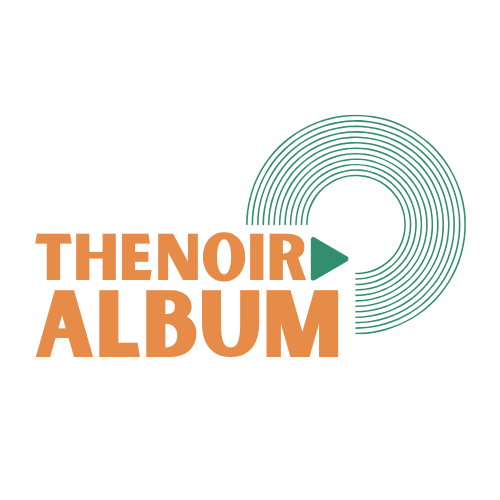When it comes to interior design, the right concept can transform a room from drab to fab faster than you can say “throw pillow.” Whether it’s minimalism that whispers serenity or eclectic styles that shout personality, the world of interior design is brimming with ideas that can make any space feel uniquely yours.
Imagine walking into a room that not only looks stunning but also feels like a warm hug. That’s the magic of well-thought-out design concepts. They can elevate your home from a simple shelter to a personal sanctuary. So, grab a cup of coffee and get ready to explore the exciting realm of interior design concepts that’ll have your friends saying, “Wow, you did this?” while you casually nod and sip your drink like a design guru.
Table of Contents
ToggleOverview of Interior Design Concepts
Interior design concepts embody a wide range of styles and ideas that impact how a space feels and functions. Various approaches, such as minimalism, emphasize simplicity and functionality, allowing for clean lines and open spaces. In contrast, eclectic designs combine elements from different eras, creating vibrant and personalized environments.
Color choices play a significant role in setting the mood of any room. Warm hues can make spaces feel inviting, while cooler shades promote calmness. Texture choices add depth, with materials such as wood and fabric creating contrast that enhances visual interest.
Furniture arrangement influences how people interact within a space. Thoughtful positioning encourages conversation and flow, while cluttered layouts can disrupt harmony. Lighting, both natural and artificial, also contributes to the overall atmosphere. Smart use of fixtures and lamps can highlight artwork and architectural features.
Sustainability increasingly factors into design concepts, reflecting a growing awareness of environmental impact. Using eco-friendly materials and energy-efficient fixtures appeals to eco-conscious designers and homeowners. Additionally, trends like biophilic design incorporate natural elements, fostering a connection between indoor and outdoor environments.
Incorporating personal touches creates unique spaces. Artwork, photographs, and treasured items reflect individual tastes and experiences. Balancing form and function remains essential, ensuring that aesthetics do not compromise practicality. Designers blend creativity with functionality to craft beautiful and livable homes.
Understanding these concepts enables individuals to transform their spaces effectively. Each concept invites exploration and experimentation, allowing everyone to discover their design preferences.
Key Elements of Interior Design
Key elements define the foundation of effective interior design. Understanding these components enables a space to resonate with both beauty and functionality.
Color Theory
Color theory plays a vital role in creating ambiance. Warm colors like reds and oranges evoke energy and enthusiasm, while cool colors such as blues and greens foster tranquility and relaxation. Bold choices can make a strong statement, conveying personality and style. Subtle variations in shades offer dimension and depth, encouraging layered designs. Additionally, complementary color schemes enhance visual contrast, creating a dynamic atmosphere. Effective application of color can transform a room, impacting mood and perception with just a few adjustments.
Spatial Arrangement
Spatial arrangement significantly influences how a room feels and functions. Proper furniture placement maximizes space utilization and promotes flow, improving accessibility. Establishing focal points directs attention and creates interest within the environment. Arranging seating areas encourages conversation and interaction, enhancing social dynamics. Open spaces foster a sense of freedom, whereas defined zones create intimacy. Each arrangement decision affects the overall aesthetic and functionality, demonstrating the power of thoughtful design. Prioritizing layout ensures that living areas reflect both individual lifestyle needs and aesthetic preferences.
Popular Interior Design Styles
Each interior design style offers unique characteristics that can transform spaces into captivating environments.
Minimalism
Minimalism emphasizes simplicity, featuring clean lines and a clutter-free aesthetic. Neutral color palettes dominate, creating a calm and serene atmosphere. Furniture in minimalist settings often focuses on functionality, with fewer pieces playing a pivotal role. Decluttering becomes essential, allowing open spaces to invite natural light. This style’s essence lies in the notion that less is more, promoting a sense of peace and tranquility.
Industrial
Industrial design showcases raw materials and unfinished surfaces, celebrating the beauty of imperfection. Exposed brick, steel beams, and concrete floors create an urban vibe. Colors commonly include grays, blacks, and browns, contributing to the rugged aesthetic. Lighting often features vintage fixtures that highlight the industrial theme. This style encourages open floor plans that foster an airy, spacious feel, combining modern elements with nostalgic elements.
Bohemian
Bohemian design embraces a laid-back, eclectic aesthetic, filled with vibrant colors and diverse patterns. Textiles play a crucial role, with layered rugs and plush cushions inviting comfort. This style often incorporates global influences, showcasing art and decor from various cultures. Furniture combinations vary, mixing vintage pieces with contemporary elements. Personal items reflect individuality, creating a unique and expressive atmosphere.
The Role of Functionality in Design
Functionality plays a pivotal role in interior design, ensuring spaces serve their intended purpose while remaining aesthetically pleasing.
Space Utilization
Maximizing space enhances usability. Effective layouts facilitate movement and encourage interaction, particularly in small areas. Designers often implement multifunctional furniture to adapt to varying needs, transforming spaces seamlessly. For example, a foldable table can double as a workspace or dining area. Incorporating built-in storage solutions helps maintain clutter-free environments, contributing to both organization and style. Every inch counts; therefore, careful planning in spatial arrangements enables users to enjoy comfort without sacrificing functionality.
Furniture Selection
Choosing the right furniture informs the overall functionality of a space. Selecting pieces that complement the room’s purpose boosts both comfort and style. Prioritizing quality over quantity ensures long-lasting durability, especially in high-traffic areas. Ergonomic designs provide support and enhance wellbeing, making them essential for home offices or living rooms. Consideration of scale is critical; oversized furniture can overwhelm a small room, while smaller pieces may get lost in expansive areas. Thoughtful furniture choices create a harmonious balance between utility and aesthetics, enriching the overall design experience.
Trends in Interior Design Concepts
Sustainable design practices are on the rise, as more people prioritize eco-friendly materials and energy-efficient solutions. Incorporating recycled elements helps create a stylish yet responsible living space. Minimalist aesthetics also continue to dominate, with a focus on decluttered spaces that foster tranquility. Soft color palettes enhance this serenity, promoting an atmosphere of calm.
Bold colors and patterns make a statement in eclectic designs, allowing for personal expression through various styles. Industrial elements, such as exposed beams and brick, are frequently paired with modern furnishings to create a striking contrast. Nature-inspired themes, including biophilic design principles, connect indoor spaces with the great outdoors, enhancing wellbeing.
Smart home technology integrates seamlessly with contemporary designs, providing convenience and enhancing functionality. This trend offers homeowners greater control over lighting, temperature, and security systems. Flexible space usage remains essential, as open floor plans and multifunctional furniture adapt to diverse lifestyles.
Layered textures add depth and visual interest, enriching the overall experience of a room. Statement pieces, like oversized art or unique lighting fixtures, draw attention and serve as conversation starters. Vintage items are increasingly incorporated into modern settings, blending history with contemporary flair.
Personal touches, such as family heirlooms or local artwork, distinguish spaces and reflect individual stories. The combination of these trends fosters an inviting atmosphere, encouraging creativity and exploration in design. Each trend highlights the importance of balancing aesthetics with functionality, ensuring spaces not only look good but also serve their intended purpose effectively.
Exploring interior design concepts opens up a world of possibilities for transforming spaces. By understanding various styles and their unique characteristics, individuals can create environments that resonate with their personal tastes.
Emphasizing the balance between aesthetics and functionality is key. Each design choice from color to furniture arrangement plays a vital role in shaping the atmosphere of a room.
Incorporating sustainable practices and personal touches not only enhances beauty but also fosters a sense of connection to one’s environment. As trends evolve, embracing creativity and innovation will continue to inspire unique and inviting spaces that reflect individual lifestyles.




